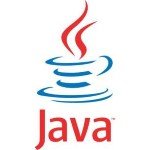Java
-

JVM c1, c2 compiler thread – high CPU consumption?
c1, c2 compiler threads are created by Java virtual machine to optimize your application’s performance. Occasionally these threads will tend…
Read More » -

Introduction to JVM and JVM languages
Java Virtual Machine (or JVM for short) is a platform-dependent software that allows you to execute programs written in languages…
Read More » -

Google Cloud Structured Logging for Java Applications
One advice for logging that I have seen when targeting applications to cloud platforms is to simply write to Standard…
Read More » -

Which JVM Version is Fastest?
How is a high-performance, low-latency Java application affected by the JVM version used? Every nanosecond counts for trading and other…
Read More » -

Complete Guide To Spring Testing
Software testing is a non-negotiable aspect of the software development life cycle. Setting up and moving on with software testing…
Read More » -

Java class loading – performance impact!
java.lang.ClassLoader#loadClass() API is used by 3rd party libraries, JDBC Drivers, frameworks, application servers to load a java class into the memory.…
Read More » -

Java Hashtable, HashMap, ConcurrentHashMap – Performance impact
There are a good number of articles that articulate functional differences between HashMap, HashTable and ConcurrentHashMap. This post compares the…
Read More » -

Functional Decomposition
Why Do I Have To Have A Function? function giveBonus(currentYear, price) { if ((currentYear % 4 === 0) && price…
Read More » -

Calling Google Cloud Services in Java
If you want to call Google Cloud Services using a Java based codebase, then broadly there are two approaches to…
Read More »


